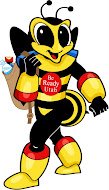Children need to be prepared for an
earthquake as much as adults, if not
more.
Infants and Toddlers
For infants and toddlers, special emphasis
should be placed on making their
environment as safe as possible.
Cribs should be placed away from
windows and tall, unsecured bookcases and
shelves that could slide or topple.
A minimum of a 72-hour supply of extra
water, formula, bottles, food, juices,
clothing, disposable diapers, baby wipes and
prescribed medications should be stored
where it is most likely to be accessible after
an earthquake. Also keep an extra diaper bag
with these items in your car.
Store strollers, wagons, blankets and cribs
with appropriate wheels to evacuate infants,
if necessary.
Install bumper pads in cribs or bassinettes
to protect babies during the shaking.
Install latches on all cupboards (not just
those young children can reach) so that
nothing can fall on your baby during a
quake.
Preschool and School-age Children
By age three or so, children can understand
what an earthquake is and how to get ready
for one. Take the time to explain what causes
earthquakes in terms they'll understand.
Include your children in family discussions
and planning for earthquake safety. Conduct
drills and review safety procedures every six
months.
Show children the safest places to be in
each room when an earthquake hits. Also
show them all possible exits from each
room.
Use sturdy tables to teach children to
Duck, Cover & Hold.
Teach children what to do wherever they
are during an earthquake (at school, in a tall
building, outdoors).
Make sure the child's emergency cards at
school are up-to-date.
Although children should not turn off any
utility valves, it's important that they know
what gas smells like. Advise children to tell
an adult if they smell gas after an
earthquake.
This information is from the Utah Seismic Safety Commission, and found on our website HERE.
Blog Revising
11 years ago











No comments:
Post a Comment